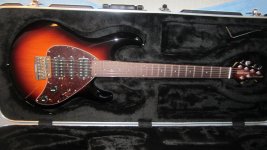rockmanhatn
Member
- Joined
- Dec 6, 2010
- Messages
- 11
Hey !
I just got my new Music man (Silhouette) guitar. I love it, i can finally say i found what i was looking for in a guitar .
.
So i have some questions:
If i want to change the strap knob for EB Super locks can i just buy it and replace it or do i have to re-drill the whole for the screw that comes with EB Super locks ???
The stock strings come with EB 9-42 and if i change them to 10-46 i have to do some adjustments to the guitar ???
One more . The black plastic tip on a tremolo bar, i want to take it off. is there advice hot to pull it of safely cos it doesn't seem to come off easy
. The black plastic tip on a tremolo bar, i want to take it off. is there advice hot to pull it of safely cos it doesn't seem to come off easy 
 .
.
Sorry for (maybe) a little dumb questions.
Thank for the answers in advance.
I just got my new Music man (Silhouette) guitar. I love it, i can finally say i found what i was looking for in a guitar
So i have some questions:
If i want to change the strap knob for EB Super locks can i just buy it and replace it or do i have to re-drill the whole for the screw that comes with EB Super locks ???
The stock strings come with EB 9-42 and if i change them to 10-46 i have to do some adjustments to the guitar ???
One more
Sorry for (maybe) a little dumb questions.
Thank for the answers in advance.



